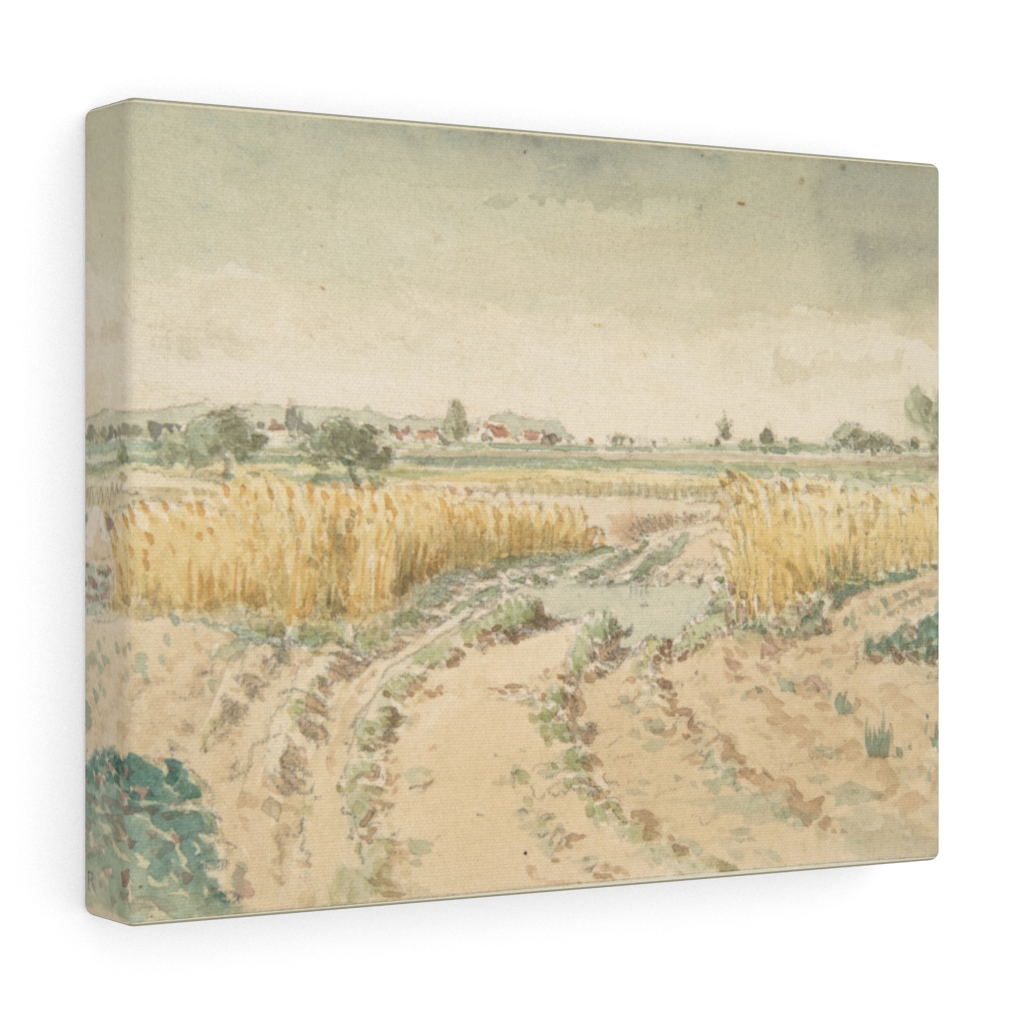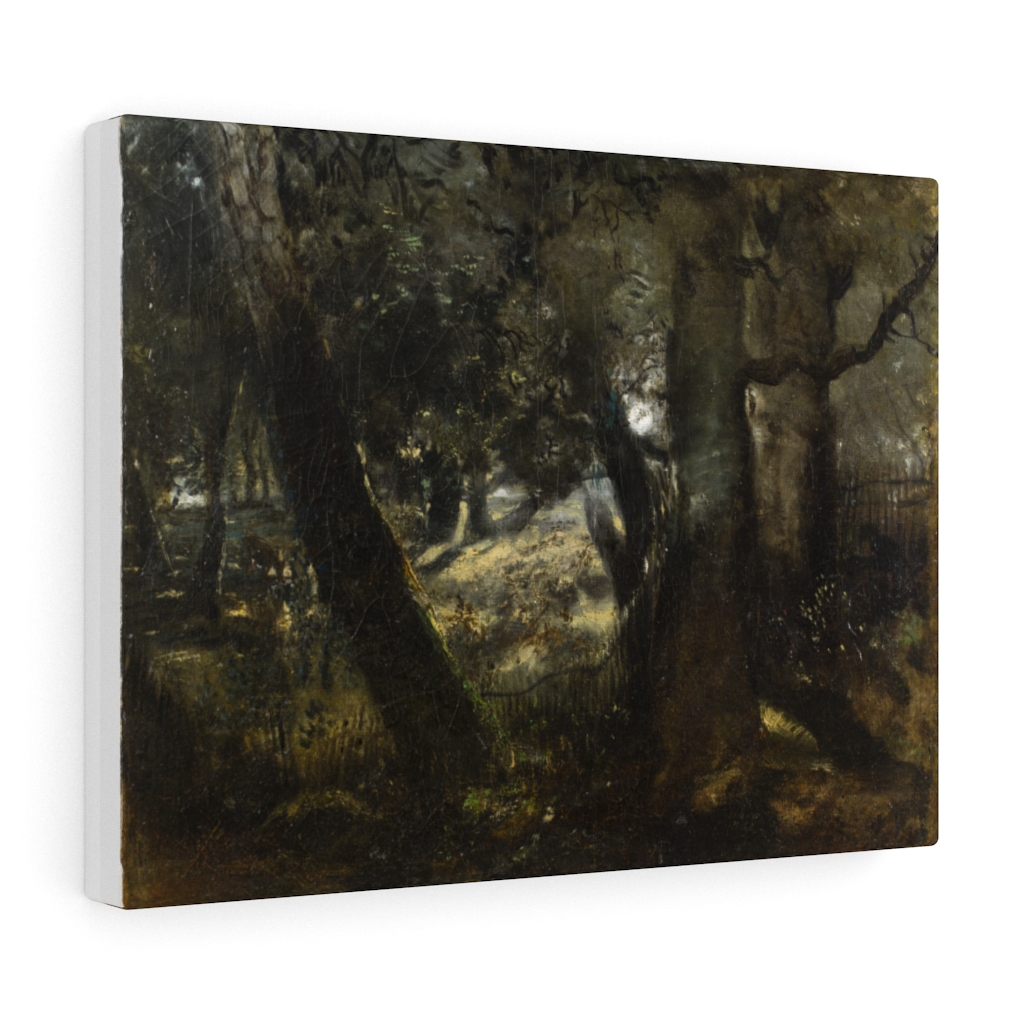Theodore Rousseau
BlogAdmin on 27th May 2022
Pierre-Etienne-Theodore Rousseau, better known as Theodore Rousseau, is a famous French landscape painter. He was the source of many innovations in landscape art. He was a primary driving force behind the Barbizon School of Landscape Painting.

He was born on April 15, 1812, in Paris, France. His father was a tailor. He began painting when he turned 14. His choice of painting outdoor locations of nature was considered a novel idea at that time. Later on, he became the driving force behind a group of leading French painters who founded the Barbizon school of landscape painters. His keen observation of nature and its beauty drove his passion for developing landscape painting. Any amount of description about this great painter is incomplete without any mention of the Barbizon School of Landscape Painting.

Barbizon School of Landscape Painters
Rousseau first visited the Fontainebleau area in 1833 and finally settle down in the nearby village called Barbizon. Some of the contemporary landscape painters in Paris were attracted to the village and Rousseau started working with them in the following decades. Since their artistic goals and their love for nature was the common thread that bound them together as artists, they came to be collectively known as the Barbizon School of Landscape Painters.
The Barbizon School of Landscape Painters was named after a village called Barbizon, which is on the edge of t he great forest of Fontainebleau near Paris in France. Barbizon School was a hub of the European movement toward naturalism in art. Until then, landscapes were being painted for using these paintings as a backdrop for allegories or, mostly, for paintings with historical narrative.

The main purpose of the artists associated with the Barbizon School of Landscape Painters was to give the landscape as the subject of painting its due place, on its own, in the field of painting and not as a corollary or a backdrop for historical narratives. The natural landscape as a subject of painting became the hero of the story that these paintings are telling now.
Theodore Rousseau was the leader behind this movement. He was a prime mover in bringing together a group of some of the great like-minded painters of that era under the umbrella of the school . Besides Theodore Rousseau, Jean Francois Millet, Carles-Francois Daubigny, Narcisse-Virgile Diaz de La Pena, Jules Dupre, Charles Jacque and Constant Troyon were the other leading lights of this school of art. All of them had earlier seen little or no success in their profession as painters in Paris. Hence, they chose to move to the nature-rich outskirts of Paris and start painting landscapes as the core subjects of their art.

Barbizon Painters
The Barbizon painters painted landscapes as a subject on their own and gave them a realistic value. Their works of art were based on contemporary French and Dutch landscape painters. They all painted beautiful landscapes with great sensitivity and deep love for nature and its exuberance. Each Barbizon painter had suffered a total lack of recognition until the mid-19th century and their tryst with the Barbizon style of painting with nature as a subject helped them gain popularity gradually.
Rejection of his work
Rousseau’s early landscape paintings were considered depictions of nature as a wild and undisciplined force. His style of painting helped him gain the admiration of many of France’s leading romantic painters and writers. He began exhibiting his paintings at the French Salon regularly from 1831. But he had to face an unsavory experience when in 1836, his painting Decent of the Cattle (1834) was rejected by the Jury. The critics were of the opinion that a few academic painters that made up the then jury, did not share the aesthetics of Rousseau. Thereafter all his entries at the Salon during the next seven years also had to face the same fate. Despite this kind of censure by the Salon in the form of rejection of his paintings, his reputation never suffered.
Influence of landscape art
During the days of his attachment to Barbizon School, Rousseau produced some tranquil pastorals, such as Under the Birches, Evening (1842-44) which reflected the influence of the famous painter John Constable. After the Revolution of 1948, Rousseau finally received official recognition as a major French landscape painter. When his paintings were well-received in the Universal Exposition of 1855, he became president of the fine arts jury in 1867. His focus on naturalism was his main contribution to the modern art of painting. Rousseau is considered one of the great innovators in French painting. Experts believe that he paved the way for impressionism, notably the outdoor approach, being adopted by the greats like Claude Monet (1840-1926) and Camille Pissarro (1830-1903).

Landscape as a Subject for Painting
Rousseau focussed exclusively on landscape paintings in which woods, trees, spacious plains, and other elements of nature are predominant. His paintings were commonly devoid of humans. His style of painting is eulogized by the experts in this manner: “Rousseau depicted these natural objects with a precise and objective vision based on direct, open-air observation. He rejected the falsity of the type of landscape picture promoted by academic art, which typically served as a backdrop for a classical or philosophical message. If his painting is Realist, there is nevertheless an element of Romantic drama in it: perhaps in the gloomy and sombre tones in the sobriety of nature and the melancholy atmosphere that characterizes his landscapes.”

Contributions to the Art of Painting
Rousseau can be credited with two innovations. Rousseau painted in the countryside in order to capture the ‘real’ nature, its ‘real’ light and color, rather than the type of light and color approved by the French Academy. Another of his innovations was to paint the same scene during different seasons of the year or at different times of the day. This kind of Rousseau’s approach to art was later used by some famous impressionist painters, particularly Claude Monet in his series of paintings such as Haystacks, Rouen Cathedral, Gare Saint-Lazare, and Water Lines.

His popularity grew over time. This resulted in increased sales of his paintings. Not long after that, he was elevated as the presiding jury at the Universal Exposition in Paris. In spite of all these positive changes in his career, he did not keep away from the tranquil artistic life in Barbizon. When he was at the pinnacle of success in his artistic profession, he died in Barbizon in the year 1867 at the age of 55. His naturalistic approach was later fully developed in the paintings of famous painters such as Monet, Renoir, Pissarro, and Sisley.
Famous paintings
Some of their famous paintings of Rousseau are Sunset in the Auvergne (1830), Market Place in Normandy (1830), Passage Paranomique (1830), Descent of the Cattle (1834), The Avenue of Chesnut Trees (1841), Forest in Boisremond (1842), Under the Birches, Evening (1842-44), Avenue in the Forest of Lisle-Adam (1849), Forest of Fontainebleau, Morning (1850), Edge of the Forest at Fontainebleau, Setting Sun (1850), Landscape with a Bridge (1850-52), Marsh in the Landes (1852), Oak Grove, Apremont (1855), Landscape with a Plowman (1860-62), Forest of Fontainebleau (1867).
Rousseau’s La Mare (The Pond)
La Mare (The Pond) (1855) by Theodore Rousseau was one of his famous landscape paintings. Rousseau made this painting when he was experiencing the most productive period of his artistic life. Through this marvelous piece of painting, Rousseau demonstrated his ability to paint naturalis
tic details spread in the vast receding space on a small canvass. His artistic excellence exhibits itself in the form of luminous light formation on the horizon in the background.
This luminosity of light is peeking through the hedging trees in the forest, which is painted to appear somewhere midway between the bright background and the darker foreground. The painter has set the figures of humans, cattle, and trees on the far side edge of the pond. The rays of the light that succeed in penetrating the wooded forest provide a source of light to the other details in the foreground. The shadows of light have lent sparkling luminosity to the patterns on the grass and the shadows of the trees and other objects reflected in the sparkling sheet of water in the pond.













